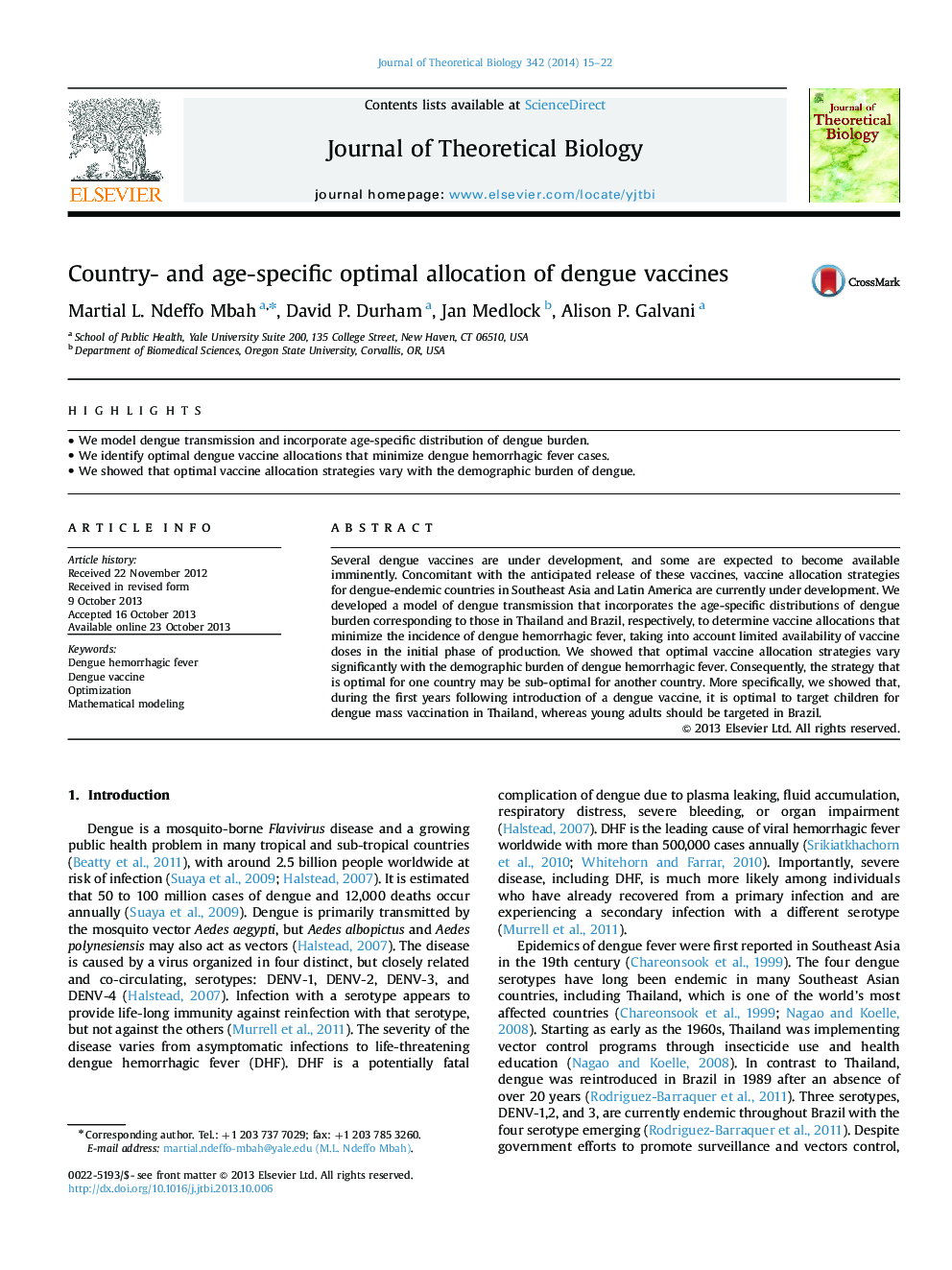| Article ID | Journal | Published Year | Pages | File Type |
|---|---|---|---|---|
| 4496208 | Journal of Theoretical Biology | 2014 | 8 Pages |
•We model dengue transmission and incorporate age-specific distribution of dengue burden.•We identify optimal dengue vaccine allocations that minimize dengue hemorrhagic fever cases.•We showed that optimal vaccine allocation strategies vary with the demographic burden of dengue.
Several dengue vaccines are under development, and some are expected to become available imminently. Concomitant with the anticipated release of these vaccines, vaccine allocation strategies for dengue-endemic countries in Southeast Asia and Latin America are currently under development. We developed a model of dengue transmission that incorporates the age-specific distributions of dengue burden corresponding to those in Thailand and Brazil, respectively, to determine vaccine allocations that minimize the incidence of dengue hemorrhagic fever, taking into account limited availability of vaccine doses in the initial phase of production. We showed that optimal vaccine allocation strategies vary significantly with the demographic burden of dengue hemorrhagic fever. Consequently, the strategy that is optimal for one country may be sub-optimal for another country. More specifically, we showed that, during the first years following introduction of a dengue vaccine, it is optimal to target children for dengue mass vaccination in Thailand, whereas young adults should be targeted in Brazil.
